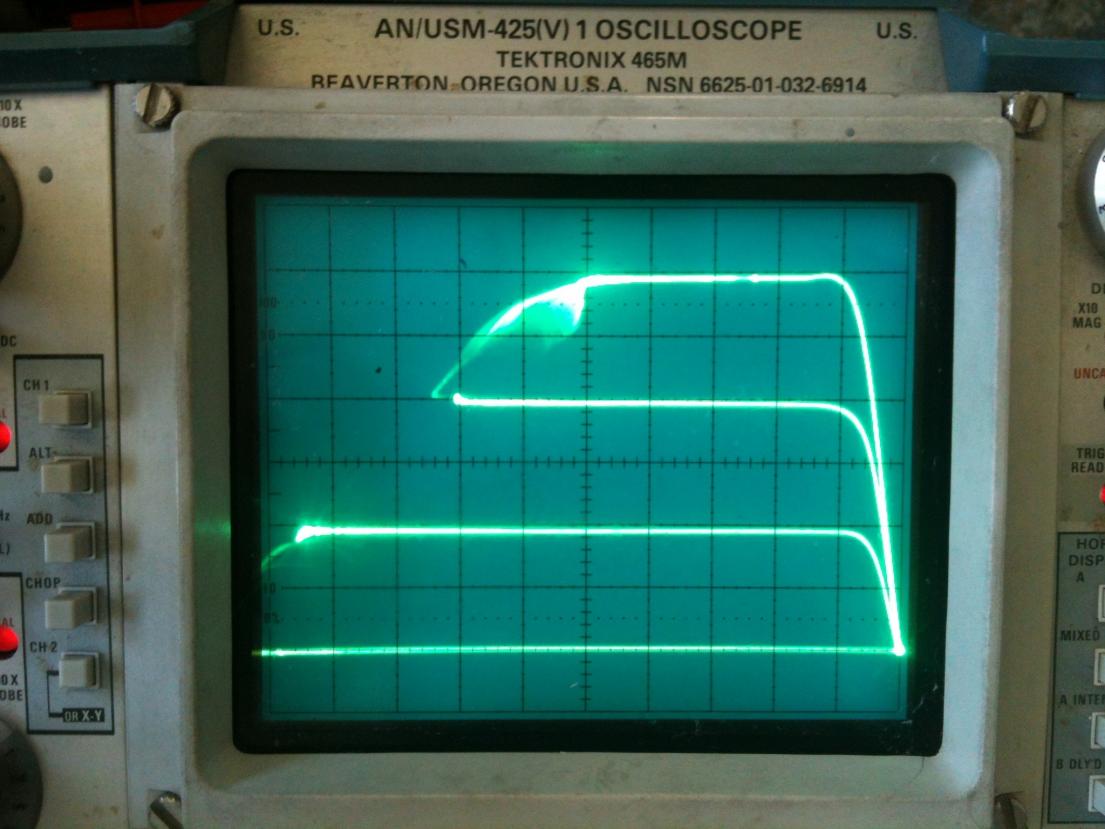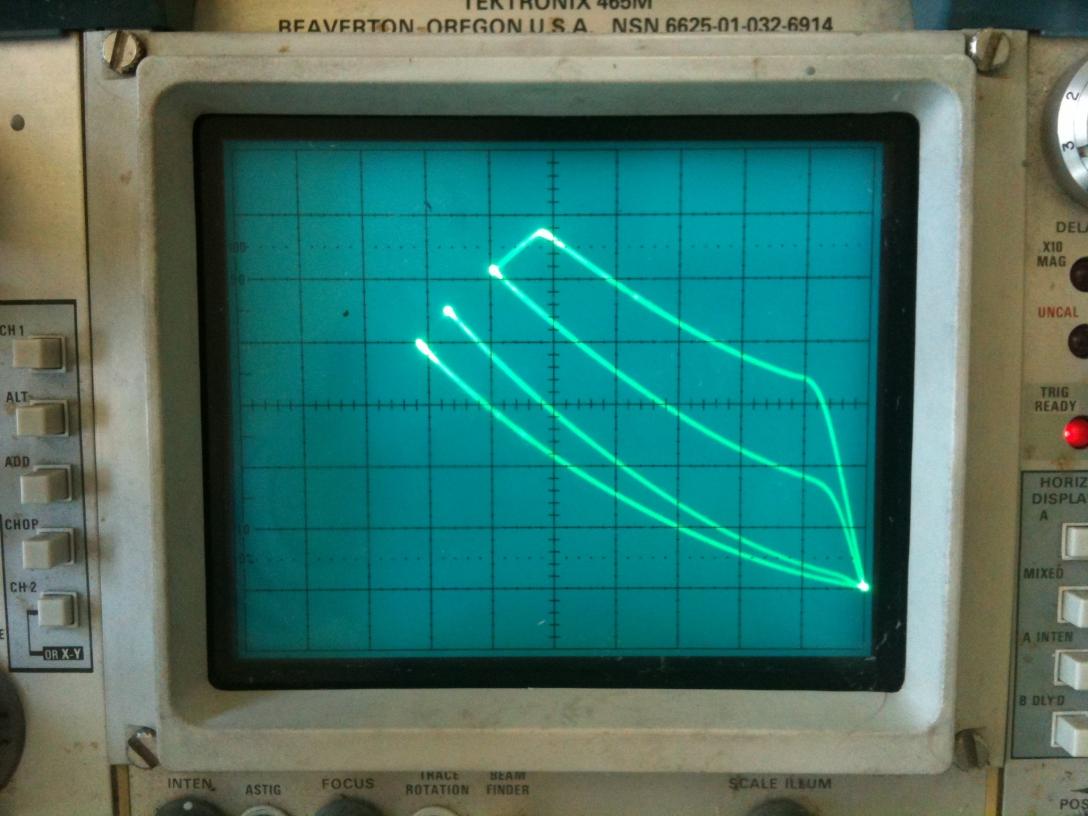This is my first post to the new forum.
I've been building and running a 10-coil monopole kit for about nine months and posted on the monopole 4 group about my progress.
I see that we need to rework several things in the kit to get closer to John's 10-pole monopole design. I saw TomC post that he had ordered a curve tracer board so he could match the drive transistors. I searched EBAY and purchased a 40 year old EICO transistor and diode curve tracer that still works. I found an owners manual with schematic and also found a 1972 Radio Electronics magazine article on using that curve tracer that may be helpful to everyone as it includes information on transistor and diode characteristics and how curve tracers can be used to measure them:
http://www.epanorama.net/sff/Test_eq...e%20Tracer.pdf
Here is a photo from my scope of curve tracing one of my MJL21194 transistors:

This particular curve tracer is a fairly simple transistor circuit - so for NPN power transistors the curve starts at the bottom right corner of the screen. I imagine the noise on the left end of each trace is due to the simple design of the curve tracer. Each of the lines is nice and flat indicating how stable these transistors are.
From the instructions, it appears the transistor gain is very close to 60. I tried two other transistors - there is an "A/B" switch allowing you to quickly see how they compare. All three were almost identical. I did notice that the longer a transistor is being tested, the gain appeared to increase as it warmed up, so a quick test with them cold got the most consistent results.
I also took a failed MJL21194 and tested it and got traces showing really bad leakage:

I believe I cooked this transistor by trying to force too much current into the energizer in an experiment last spring
I plan to test all the transistors I haven't soldered into circuit boards.
Monty
I've been building and running a 10-coil monopole kit for about nine months and posted on the monopole 4 group about my progress.
I see that we need to rework several things in the kit to get closer to John's 10-pole monopole design. I saw TomC post that he had ordered a curve tracer board so he could match the drive transistors. I searched EBAY and purchased a 40 year old EICO transistor and diode curve tracer that still works. I found an owners manual with schematic and also found a 1972 Radio Electronics magazine article on using that curve tracer that may be helpful to everyone as it includes information on transistor and diode characteristics and how curve tracers can be used to measure them:
http://www.epanorama.net/sff/Test_eq...e%20Tracer.pdf
Here is a photo from my scope of curve tracing one of my MJL21194 transistors:
This particular curve tracer is a fairly simple transistor circuit - so for NPN power transistors the curve starts at the bottom right corner of the screen. I imagine the noise on the left end of each trace is due to the simple design of the curve tracer. Each of the lines is nice and flat indicating how stable these transistors are.
From the instructions, it appears the transistor gain is very close to 60. I tried two other transistors - there is an "A/B" switch allowing you to quickly see how they compare. All three were almost identical. I did notice that the longer a transistor is being tested, the gain appeared to increase as it warmed up, so a quick test with them cold got the most consistent results.
I also took a failed MJL21194 and tested it and got traces showing really bad leakage:
I believe I cooked this transistor by trying to force too much current into the energizer in an experiment last spring

I plan to test all the transistors I haven't soldered into circuit boards.
Monty
Comment